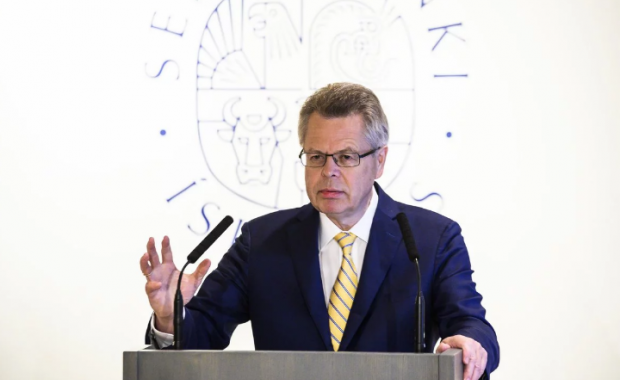One of the most prestigious universities in the US will offer courses in modern Icelandic this fall. The University of California at Berkeley will be the third American university to offer courses in modern Icelandic. Brigham Young University in Utah and the University of Minnesota have offered courses in modern Icelandic.
A strategic language, spoken by 330,000 people
This fall and spring semesters the UC Berkeley Department of Scandinavian and Institute of European Studies (IES) will co-sponsor back-to-back courses in modern Icelandic in the fall and spring semesters. According to the Berkeley Institute of European Studies Icelandic is “a strategic language in transatlantic connections between the U.S. and Europe, as well as between Europe and the Arctic.”
Old Norse has been taught at Berkeley since 1892, and the Saga Club, which meets once a month to translate passages of Old Norse literature was founded in 1954, making it one of the campus’s longest-standing reading groups.
The new courses will introduce students to Icelandic language, literature and culture, as well as “the world they will encounter via their studies, or on arriving in Iceland for business, an archaeological expedition or other explorations.”
Icelandic language purism
Jackson Crawford, who will teach the Icelandic class argues that one of the things that make Icelandic fascinating is the “language purism” of Iceland New Icelandic terms are developed for new or modern concepts and phenomena:
“Even the wonders of modern technology are largely given their own unique words, rather than borrowing from English or other languages – a computer is ‘tölva’ (a conjunction of tala, which means number, and völva, a witch or female fortune teller).”
Constructing new words from older root words means the language maintains and nurtures its roots maintaining a strong link to Old Norse, the language of the Sagas. A fluent speaker of modern Icelandic can read the sagas with very little difficulty.
Medieval in structure, but modern in spirit
Crawford notes, however, that the supposed changelessness of the language can be overstated.
“Even if you print a medieval saga with Modern Icelandic spellings and read it with modern pronunciation – a common practice in Iceland – Old Norse comes across as a distinctly different language,” he says. “Today’s Icelanders live in the same world as we do, and their dynamic language reflects that. Icelandic may be medieval in structure, but it is modern in spirit.”
One of the most prestigious universities in the US will offer courses in modern Icelandic this fall. The University of California at Berkeley will be the third American university to offer courses in modern Icelandic. Brigham Young University in Utah and the University of Minnesota have offered courses in modern Icelandic.
A strategic language, spoken by 330,000 people
This fall and spring semesters the UC Berkeley Department of Scandinavian and Institute of European Studies (IES) will co-sponsor back-to-back courses in modern Icelandic in the fall and spring semesters. According to the Berkeley Institute of European Studies Icelandic is “a strategic language in transatlantic connections between the U.S. and Europe, as well as between Europe and the Arctic.”
Old Norse has been taught at Berkeley since 1892, and the Saga Club, which meets once a month to translate passages of Old Norse literature was founded in 1954, making it one of the campus’s longest-standing reading groups.
The new courses will introduce students to Icelandic language, literature and culture, as well as “the world they will encounter via their studies, or on arriving in Iceland for business, an archaeological expedition or other explorations.”
Icelandic language purism
Jackson Crawford, who will teach the Icelandic class argues that one of the things that make Icelandic fascinating is the “language purism” of Iceland New Icelandic terms are developed for new or modern concepts and phenomena:
“Even the wonders of modern technology are largely given their own unique words, rather than borrowing from English or other languages – a computer is ‘tölva’ (a conjunction of tala, which means number, and völva, a witch or female fortune teller).”
Constructing new words from older root words means the language maintains and nurtures its roots maintaining a strong link to Old Norse, the language of the Sagas. A fluent speaker of modern Icelandic can read the sagas with very little difficulty.
Medieval in structure, but modern in spirit
Crawford notes, however, that the supposed changelessness of the language can be overstated.
“Even if you print a medieval saga with Modern Icelandic spellings and read it with modern pronunciation – a common practice in Iceland – Old Norse comes across as a distinctly different language,” he says. “Today’s Icelanders live in the same world as we do, and their dynamic language reflects that. Icelandic may be medieval in structure, but it is modern in spirit.”







